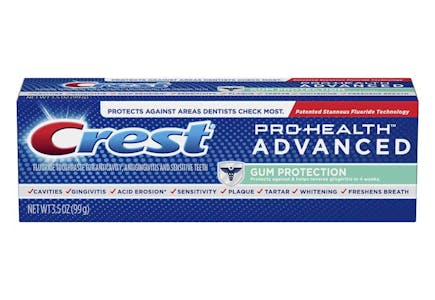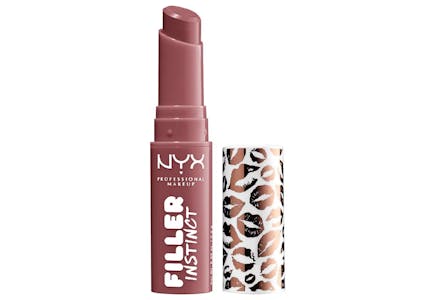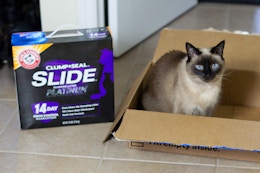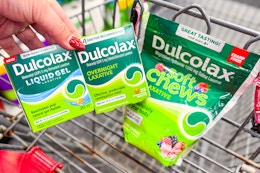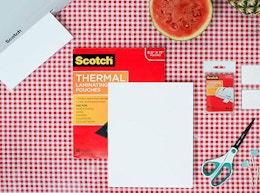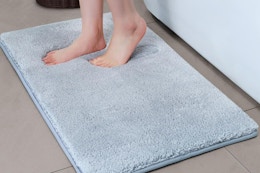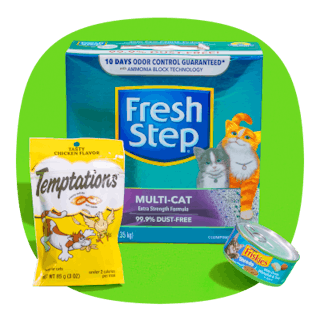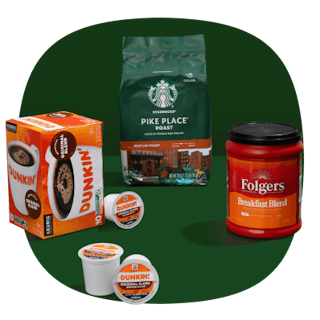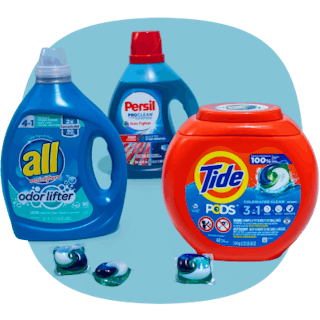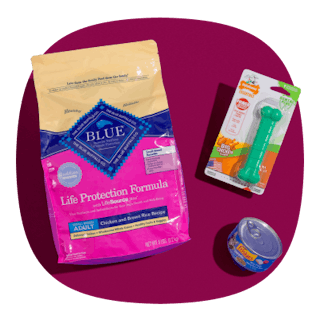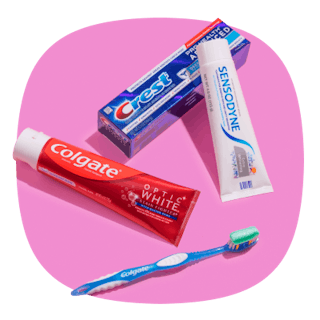Who doesn’t love getting free things? Maybe you’re already saving on your grocery bill as food prices remain high or know the best gas station to save on fuel. But if you’re truly krazy , getting things for $0.00 is the best. We’re talking about ways you can get free stuff , baby!
Whether you’re on the hunt for free samples or birthday presents there are plenty of ways to get free goodies if you know where to look. Heck, we enjoy the hunt so much we have an entire page dedicated to freebies . While some promotions don’t run endlessly, here are 30 of our favorites you can pretty much always get your hands on.
For more smart shopping tips and savings hacks, download The Krazy Coupon Lady app or text HACKS to 57299.
1. A free Amazon trial for six months with a new Amazon Prime Student membership

This one is hard to pass up — a free 30-day trial of Amazon Prime for new members. And if you’re a new-to-Prime college student, you get a whopping six months of Amazon Prime for free. You just need a valid college email address.
2. Free food from your local restaurants

It sounds crazy but there are ways to get free food at restaurants . Some of these deals are only available for reward members or your birthday. Others only require you to download the restaurant’s app. At the end of the day, these places will do anything to get you through their doors. Here are some of our fave ways to get free food.
-
Cake during your birthday month when you sign up for the Olive Garden eClub .
-
Donuts at Krispy Kreme when you sign up for Krispy Kreme Rewards.
-
Fries at McDonald’s with an in-app coupon .
-
Chicken sandwiches at Chick-fil-A with in-app offers .
-
Free food at Red Robin on your birthday.
-
Pastry at Panera when you sign up for My Panera rewards .
-
Scoop of ice cream at Baskin-Robbins with app download.
-
Appetizer at Texas Roadhouse when you sign up for their VIP Club.
Related: 10 Things You Need to Know to Get Free Fast Food
3. Free diapers from brands like Huggies and Pampers

Join Pampers diaper rewards programs to earn freebies. You can also get no-cost diaper samples from companies like Dyper (you pay $5 shipping but they give you a $5 off coupon) or check the National Diaper Bank to see if you qualify.
Baby registries often come with free diaper samples, so don’t pass up the welcome gifts offered by stores like Target and Walmart.
Related: Check out all the ways you can easily score free diapers .
4. Magazine subscriptions
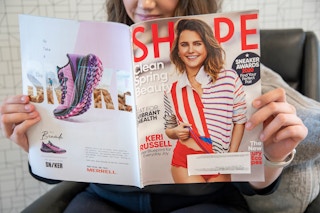
If you’re willing to give up a little bit of information about yourself, like your income, family size, or occupation, you can always get magazines for free.
Rewards Survey lets you earn points for subscriptions to magazines like Real Simple , Cosmopolitan , and Highlights for the kids.
Amazon Prime members also get access to bestselling publications like Food Network , Taste of Home , Prevention , Time , National Geographic , and Rolling Stone through Prime Reading. The best part? You don’t even need a Kindle to take advantage. Read from any device, even your phone.
Netflix also has a free magazine with stickers!
Related: How to Get the Free Lego Life Magazine
5. Music with Spotify, Pandora, and Apple Music

One thing all music lovers can agree on: nothing sounds better than free music. Both Spotify and Pandora offer free services as well if you don’t mind listening to a couple of commercials now and then.
Want to try out Spotify Premium but don’t want the premium price? Get a free 1-month trial just by signing up.
You can also get a 1-month free trial for Apple Music that you can cancel anytime, so there’s no risk.
Amazon Prime users should also take advantage of the Amazon Music subscription that comes with their Prime membership.
6. Boxes of free samples from PINCHme and Social Nature
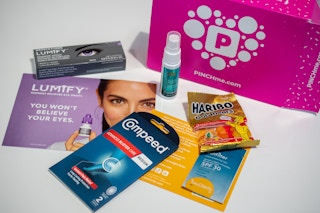
With PINCHme, you’ll get a variety of free samples from companies. All you have to do is fill out a questionnaire and update it when they ask. After completing your profile, you can pick out the samples you want to receive, and after six to eight weeks of processing and shipping, you’ll receive your box.
Social Nature also gives you free things in exchange for your honest review of the items. All you have to do is fill out a survey, and you’ll get rebates and coupons for a variety of free samples.
7. Photo prints from Walgreens, CVS, Shutterfly, and more

Sites like Snapfish and Shutterfly offer promos for free photo prints several times a year (think major holidays), and Walgreens and CVS have photo print promos often. Sign up for emails from these companies, and be sure to follow KCL for the latest deals on photos .
8. Shampoo, conditioner, and body wash
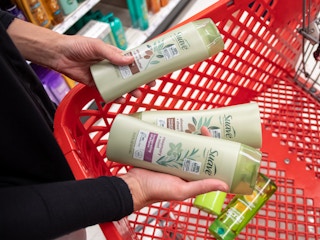
Shampoo , conditioner , and body wash are three of the items you can always get for free with coupons . Seriously, don’t shell out your money — stock up instead.
Pantene, Tresemme, and Suave are the big players, but you can find other brands like Garnier at no cost, too. Get these free items at Target by combining Target Circle offers and gift card promos with manufacturer coupons.
9. Free toothpaste, floss, and toothbrushes
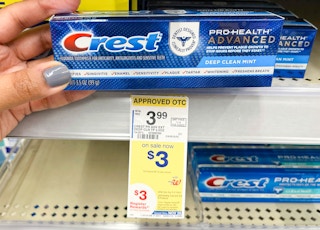
Do not pay for toothpaste. EVER. We can’t emphasize this enough. Drugstores love to give toothpaste away to couponers for free. Don’t pay for floss either!
We get these freebies at Target , Walmart , Rite Aid , CVS , Walgreens , and more with coupons. Use coupons on top of sale or clearance prices, then stack them with cash-back rebates through apps like botta to get free items (or even make money)!
10. Candy and gum

You can find freebie candy deals at drugstores like CVS , Walgreens , Rite Aid , and sometimes Walmart , especially around holidays like Valentine’s Day, Easter, Halloween, and Christmas.
Candy companies like Mars will offer high-value coupons (up to $1 off) before a holiday to help drive sales. The secret is that you can often use these high-value coupons on smaller items or single candy bars instead of the big bags, making them free!
Another way to get free candy is to wait until candy goes on sale after the holiday is over. Look for savings of up to 75% at Walmart , Target, and drugstores three to five days after the holiday, and pair with coupons to score freebies.
Hit up Kroger, Target, or Walgreens for freebie deals on candy, gum and mints.
11. Free shipping from Amazon, Target, and other major retailers

We’re not talking about free store pickup or “spend this much to get free shipping.” Chances are good you don’t know these sneaky ways to get free shipping from some of your favorite retailers:
-
Use Amazon’s Subscribe & Save and pay zero for shipping without Prime.
-
Get free 2-day shipping from Target.com with the Target Circle Card .
-
Place a Kohl’s order at an in-store kiosk, and ship it to your home (or someone else’s) for free.
-
Get a lifetime REI Co-op membership (for $30) and get free shipping with no minimum order required.
Check out our list of stores that offer free online shipping .
12. Shipping supplies from the United States Post Office

Hit up USPS.com and filter by “free supplies” to get free items like shipping boxes, labels, and padded envelopes delivered right to your door.
13. Free kids’ meals from national chain restaurants like Bob Evans and Red Robin

There’s no reason you should ever pay for your kids to eat at a restaurant. If you’re a paying adult, take advantage of kids-eat-free deals from restaurants like IHOP , Bob Evans , Red Robin, and more.
Kids eat free every day between 4 p.m. – 10 p.m. at IHOP (during certain promotions), while Bob Evans doesn’t charge for children after 4 p.m., and Red Robin gives kids a free meal on their birthdays.
In fact, we have a list with a whopping number of places where kids eat free (or nearly free) .
14. Free groceries

Did you know you can get single bananas for free at stores like Target and Walmart when you use rebate apps? Yep, it’s true. And you can score way more than bananas too. Using apps like Ibotta, we get freebie deals on tons of different grocery products including:
-
Bananas
-
Avocados
-
String cheese
-
Granola bars
-
Yogurt
-
Ketchup and mustard
15. Feminine hygiene products like Kotex, Poise, and Always

Free pads and tampons are a regular deal here on KCL, especially brands like Poise , Kotex , Always , and Depend . You’ll find feminine liner deals most often at Target , Family Dollar , and Kroger . These brands often offer some of the highest-value coupons around (up to $5 off!), making these products free when paired with sale prices.
16. Makeup freebies from Sephora, CVS, Walgreens, Rite Aid, and more
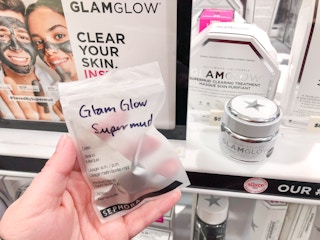
Get a free take-home sample of nearly any product at Sephora , including foundations, loose powders, lipsticks, and perfumes. Don’t be shy about asking! There is no purchase required, and you can choose up to three samples per area of the store: color (makeup), skincare, and fragrance.
Hit up drugstores armed with high-value coupons for free mascara, eye shadow, eyeliner, and more. CVS in particular is a gold mine, but Walgreens , Rite Aid , and Target have been known to have great deals as well. Stack coupons with drugstore rewards promos, like Rite Aid Rewards and myWalgreens rewards program at Walgreens. Plus, use rebate apps like Ibotta to score makeup for free.
Watch for high-value makeup coupons around the holiday season and spring, when most people are changing up their look and companies are releasing new product lines.
17. Free internet through T-Mobile Project 10Million

There are a few ways to get FREE or cheap internet. K – 12 students who meet economic requirements can get free internet through T-Mobile Project 10Million (for T-Mobile customers and non customers).
18. Free airline tickets

You may be skeptical about credit cards because, let’s face it, there’s a risk involved. If you can’t pay off your balance every month, this isn’t for you.
Just use your credit card instead of debit to pay for bills you’re already paying anyway, like groceries, fuel, etc. Rack up points you can redeem for actual plane tickets. Pay off your balance in full every month to avoid interest.
19. Newspaper coupon inserts

There are tons of ways to get newspaper coupon inserts every week for free. Here are a few great ideas for getting your hands on multiple copies without paying a dime:
-
Contact your local recycling center and see if they’ll let you go through their bins.
-
Call local schools and see if they have a newspaper recycling program.
-
Ask gas station and convenience store managers if you can have their unsold newspaper inserts.
-
Ask neighbors if you can have their unwanted inserts.
-
Check coffee shops and fast-food restaurants you hit up often.
-
Ask a librarian if you can have the coupon inserts in the library’s Sunday papers.
20. Facials at Aveda

Need a little me-time? Get a complimentary virtual or in-store hair consultation or mini facial at Aveda stores.
Just visit the Aveda website and click “Book a Store Service” to get the free customized service on their offers page.
21. Free streaming services from Freevee, PlutoTV, YouTube, Crackle, and more

You can find free trials for most streaming services. However, once your trial is up, you can’t access content without paying for it. Lucky for you, here’s our list with several streaming channels you can watch for free all day, every day.
22. Books from Project Gutenberg, Amazon, Random House, and more

Besides checking your local library, there are tons of ways to get free digital titles. Browse more than 60,000 free e-books on Project Gutenberg.
And remember, as an Amazon Prime member, you also get to read books and pay nothing for titles like The Lord of the Rings , Life of Pi , Harry Potter , and 1984 with Amazon Reading.
You can find free books for kids by joining library reading programs or checking Imagination Library to see if your neighborhood is registered. Basically, you should never have to pay to find a good book!
You can also get access to thousands of indie books on Stuff Your Kindle Day . And if you’re looking for indie audiobooks, check out Stuff Your Earbuds Day too.
23. Free smoke alarms
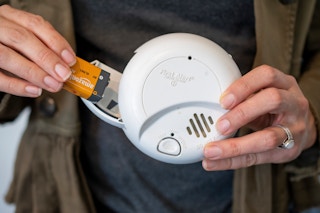
If your in need of smoke detectors, but can't afford to buy them, you have options. Reach out to your local fire department and ask about any free smoke detector programs. You can also contact the American Red Cross to see if they can install free smoke dectectors in your area.
24. Free college tuition

No, we’re not kidding; some colleges offer free tuition for students . A debt-free college education is hands down the best free thing you’ll ever get, and the list of tuition-free schools in the U.S. is growing.
Look for universities that offer income-based tuition, like SUNY and CUNY in New York, community colleges that offer low- to no-cost in-state tuition (thank you, Tennessee and Oregon!), and City College of San Francisco.
There are also several companies that will pay for your college when you work for them.
25. Find free pet vaccinations near you.

States and local governments often provide free or low-cost vaccination programs. To do an online search, type in “ free pet vaccinations near me ” plus:
-
Your state
-
County
-
City/locality
Organizations across the country, including Remote Area Medical Pop-Up Clinics and various branches of the Humane Society, also provide free to low cost vaccinations.
26. Free moving boxes from retailers, including Barnes & Noble and Trader Joe’s

We’ve found several places where you can get free moving boxes , including major retailers like Barnes & Noble , Trader Joe’s , and Whole Foods . Just call your store, ask to speak to a manager, and arrange a time to pick up any extra boxes they may have.
27. Light bulbs from Rite Aid
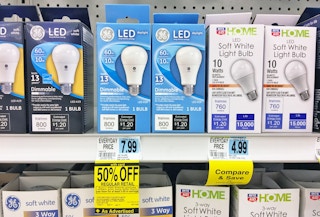
Get the best light bulb deals at Rite Aid . Use Rite Aid Rewards deals with sale prices to get them free (or even make money) without using a single coupon.
28. Free disposable razors at Target and Walgreens
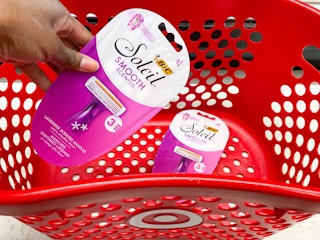
You should never pay for disposable razors ever. Schick and Bic both offer high-value razor coupons (we’re talking between $2 – $3 off one package) every two months. With that in mind, be sure to follow KCL and watch for coupons on razors so you can snap up these deals when they come around.
Shop Target or Walgreens for the most frequent freebie deals on razors. They’re often free or even moneymakers when you combine Circle offers with manufacturer coupons and gift card promos.
29. Get a free FidoAlert or TabbyAlert pet tag.

If you have the free FidoAlert or TabbyAlert tag and belong to the FidoAlert or TabbyAlert network and your pet goes missing, all you have to do is send out a FidoAlert or TabbyAlert text/email that’ll notify all registered users about your missing pet. When your pet is found, you’ll get a text with the name and phone number of who found your pet. To get your FidoAlert tag for free, fill out the request form at FidoAlert.com and join the FidoAlert network. To get a free TabbyAlert ID tag for your feline friends, fill out the request form at TabbyAlert.com and join the TabbyAlert network.
30. Firewood

Don’t ever shell out money for firewood for your wood-burning fireplace or before your next camping trip. You can always find free firewood in your area. Check your local Craigslist “free” section, or search Facebook Marketplace for “firewood.” I just checked, and there are four Craigslist listings for firewood in my area alone!
Download the KCL app to add and redeem coupons in store





